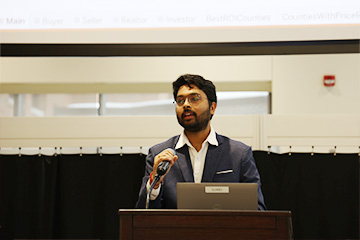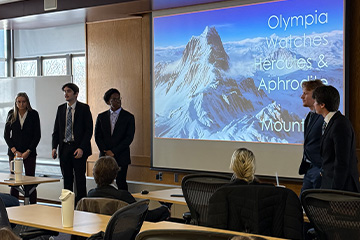What to know about inflation, as US hits 40-year high
Inflation continues to rise in the U.S., now at its highest level in four decades. What’s behind the surge? What are some of the short-term and long-term impacts? And how and when can we expect this trend to reverse course?
Mark Spieles, logistics program faculty member and director of corporate relations for the Central Michigan University Department of Marketing and Hospitality Services Administration, shared his thoughts on some of the most-asked questions surrounding inflation and its impact here in the U.S.
What are the biggest contributors to inflation?
In 2021, consumer prices rose at their fastest pace in 40 years. Higher consumer prices are a result of persistent supply chain challenges, labor shortages and continued strong demand for goods. Other contributors to the current inflation issue include fewer workers in the labor market, forcing employers to increase wages to attract workers, and Consumers retaining savings from government stimulus programs and depressed purchases of services, which directs spending towards goods that have a limited supply.
To understand inflation better, it might be best to view it through the Consumer Price Index. Food makes up around 15% of the CPI and around 8.5 % of disposable income in the U.S., while the leading drivers of the CPI are housing and transportation because higher energy and labor costs, coupled with supply chains that are still recovering from disruptions in 2021, continue to be driving factors in overall inflation.
What is causing rising food prices?
The current increase in food prices is being driven by some of the same factors that are driving overall inflation but for different reasons. In the last half of 2021, many Americans chose to dine in instead of dining out due to increasing COVID-19 cases, causing a higher demand for food purchased at grocery stores. As a result, grocery and food prices increased by 6.8% in November 2021 from 2020. Consumer packaged goods are also being impacted significantly by higher diesel fuel prices, a shortage of truck drivers, and increased labor costs.
How are labor trends impacting inflation?
The inflation related to U.S. labor participation is concerning. With labor participation – now at 62.2% – at its lowest rate since 1974, expect manufacturing, logistics and many other industries to turn to robotics and automation to replace jobs that have historically been done by humans.
What are the lasting consequences as a result of rising inflation, especially to the average American?
The cost of living in the U.S. increased 7% since January 2021 as a result of higher inflation. This happened in spite of wages increasing by 4.7% in 2021 because the costs of goods and services outpaced these gains reflected in our overall cost of living, thus the average worker received a 2.4% pay cut. The impacts of inflation are felt most by lower-income families, families of color, and rural households more than other demographics a 2021 Bank of America research report states. Retirees will also feel the impact, while the Social Security cost-of-living adjustment for 2022 is 5.9%, it does not cover full inflation. To combat all of this, the Federal Reserve might be forced to intervene by raising interest rates, which will make it more expensive to finance the new businesses, cars, and homes that are vital to growing our economy.
How long is this expected to continue and how it is resolved?
Economists are predicting this to persist through 2022 before we see some relief in 2023. The impact of higher energy costs may persist well beyond this as government policy shifts the U.S. away from the consumption of fossil fuels, and restrictions on investment and exploration by agencies and activist investors will cause energy costs to continue to rise in 2022. Ultimately, supply chain resiliency will improve but inflation is certainly not transitory and the U.S. will see higher inflation for the next few years.

About Mark Spieles
Mark Spieles joined the CMU Department of Marketing and Hospitality Services Administration in Fall 2014 as a professor and director of corporate relations for the Logistics Management program.
He has more than 25 years of professional experience in logistics, including 20 years with Ryder System, Inc. where he was the Director of Customer Logistics prior to coming to CMU. Spieles earned a bachelor’s degree in marketing and logistics management from CMU and has an MBA in finance from Wayne State University.




